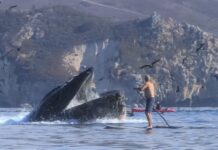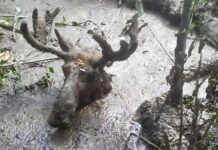The Portuguese man o’ war is a stunning sight to behold, with its long trailing tentacles and brilliant blue and purple hues – but don’t be deceived by its beauty. These jellyfish are covered in venomous nematocysts that paralyze and kill fish and other small animals. And if you come into contact with one of these critters, the consequences can be excruciatingly painful and even deadly.
The poisonous sting of the Portuguese man of war does not deter one species in the ocean. This tiny nudibranch, known as the blue sea dragon, preys on jellyfish and takes venom from their tentacles to build an even more potent sting of its own.

With its translucent blue body and wing-like appendages, the blue sea dragon appears to be a little dragon soaring through the water. But don’t be fooled by its delicate appearance; this creature is a vicious predator that has evolved to target one of the ocean’s most dangerous critters.

The blue sea dragon is able to combine the venom of the Portuguese man o’ war into its own stinging cells by selectively digesting the tentacles of the jellyfish, resulting in a weapon that is even more effective than the jellyfish’s own poison. And, despite their small stature, these creatures are not to be overlooked; they are capable of bringing down prey much larger than themselves, tearing into the flesh of their victims with their formidable jaws.

The bond between the blue sea dragon and the Portuguese man of war is only one example of the complex web of life that thrives under the waters. While these organisms may appear unusual and even frightening to us, they are perfectly adapted to their habitat and serve an important part in the ocean ecosystem.

So, the next time you’re going along the beach and come across a washed-up Portuguese man of war, take a moment to appreciate the enormous complexity of life that exists within our waters – and the interesting creatures that call it home, such as the blue sea dragon.






